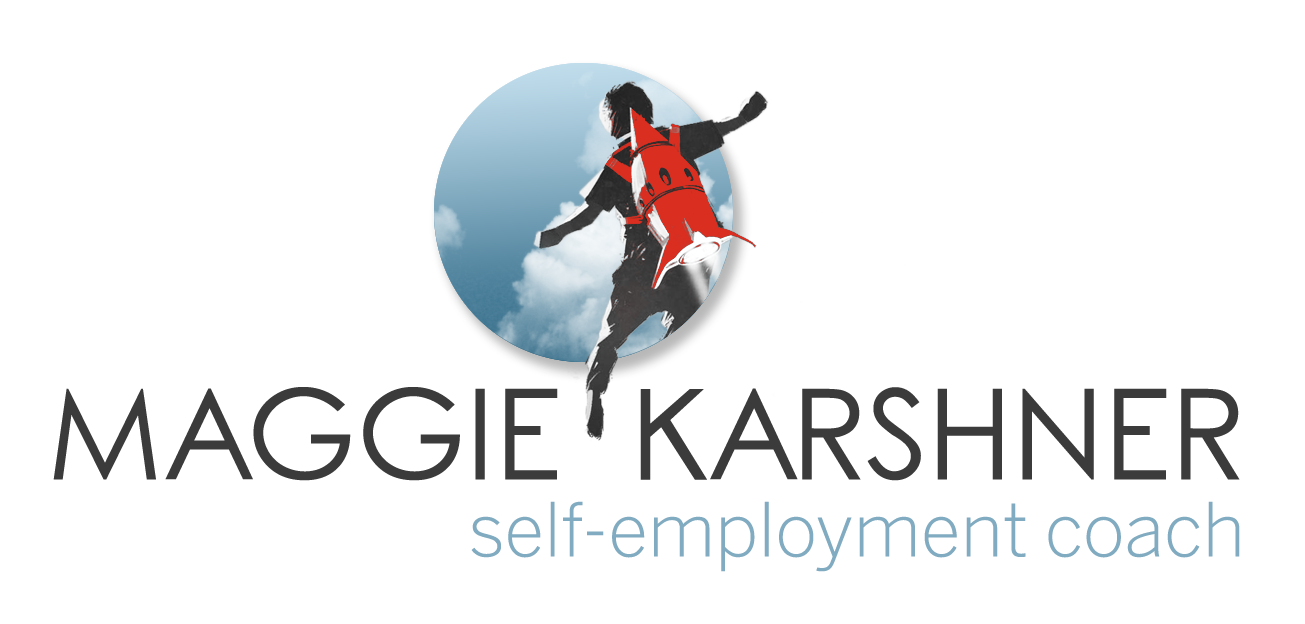Don't Delay Self-Employment Because of Retirement: How to Seize Saving Now!
/Retirement planning feels daunting to many employed people. Retirement planning when self-employed can feel profoundly perplexing. (Plus that daunting feeling turned up to eleven!) Many people avoid self-employment exactly because of their concerns about retirement savings. Others stave off their retirement anxieties by imagining they'll work till the day they die. There is a way to be self-employed AND have a retirement. Today I'm going to demystify how to do this and give you concrete next steps.
Why Retirement is Important
For those of us who are very passionate about our work, we might not be able to imagine a time when we'd want to stop working. This is a beautiful thing, but we don't want to be *trapped* into working when we're old and tired and would rather be enjoying our limited years. Even if you continue loving your work till the day you die, your body might have other plans and need more care at some point. Planning for healthy finances as we age is just a wise move.
It can be scary to face aging and end of life. This facing can be important to do, but you don't actually have to face it to start building your retirement. All you have to do is set aside *something* for retirement. The goal of this article is to have you saving for retirement if you're not already. Or, if you're already saving, ensure that those savings are working to their maximum.
Where Does the Money Come From?
The transition from employment to self-employment comes with a lot of discovering how the proverbial sausage is made. You get tons more control over every step and the final outcome, but there are more moving pieces. In other words: YOU get to choose where your retirement savings money comes from! (You possibly never wanted this choice, yet here we are!)
If you're a follower of Mike Michalowicz's book Profit First, (or you hang out around me too much) then you're familiar with divvying up your revenue across 4 categories: operating expenses, taxes, owner pay, and profit. You could consider retirement savings as a 5th category - try starting it at 1% and increasing it over time. Or retirement savings could be a portion of an existing category (likely either owner pay or profit.) Or maybe you pay a small monthly amount from your personal finances and use a chunk of your profit payments to fund further retirement savings? It's all up to you!
Where Does the Money Go?
In employed life, we set a portion of each paycheck to get contributed to your 401k and your employer might even match that amount! You selected an amount once, probably with some support from HR, and never thought about it again. Reinventing this in self-employed life can seem wildly abstruse without an HR department, nor an obvious idea of where one gets a 401k.
First off, a 401k might not meet your needs best. Self-employed business owners can save for retirement in a solo 401(k), SEP IRA, SIMPLE IRA, as well as regular IRAs. Each has its pros and cons, so that's a good thing to bring up with your tax preparer or a financial planner.
Contributing to a retirement account can save you money on your federal tax bill. You don't have to contribute to it monthly, it could be a once in a tax year contribution. Keep in mind that you need to make contributions to those accounts before Dec 31st or before the following April 15th, depending on the type of account. Check-in with your tax preparer and financial planner each November or December in case there's money you need to move before the end of the year.
A financial planner is also a great resource to set up one (or more!) of these retirement accounts for you. Or, you can set accounts up through an online broker or most financial institutions. Here's a list of places where you can sign up for an IRA!
But FIRST: please be sure you have a healthy emergency fund for your business as well as personally. Wait to contribute to retirement accounts until after you've got that emergency fund. Retirement funds have penalties for withdrawing your funds prematurely. This means a separate emergency fund is key to ensuring your money will grow!
Retirement Planning Overwhelm
The amount you need to save for retirement can feel overwhelming. Even if you only need $50k per year to live off of, and don't think you'll need to for more than 10 years... that's half a million dollars. It adds up fast! But you don't actually need to save every single one of those dollars from your income. Retirement accounts are invested which means they earn 6%-8% each year. Keep the money earned in those accounts and you've got compound interest. With time, compound interest will make the money you're saving into exponentially more money!
To make a game plan for how much you'll need, and therefore how much you need to be saving now, you need to talk to a financial planner. A financial planner will streamline all the challenging-to-math things. Things like compounding interest, inflation, and the unpredictable. They'll look at your specific situation and design a plan that takes into account your present reality and your future goals.
Financial planners utilize a couple of different payment structures. A financial plan could have a one-time fee (possibly broken up over many months) that usually totals $1,000 to $3,000. Some financial planners roll the financial planning into the fees for managing your investments. Managing your investments fees are assessed once a year and are usually 0.25% to 1% per year of your total assets. (If your assets are growing at a conservative 6% per year, then that money is still working for you!) Some financial planners utilize an hourly or retainer model, or a combo of all these. (Learn more about these different pay structures at Nerd Wallet.)
All these are completely reasonable. The thing you don't want is a financial advisor who works on commission. This means they get paid anytime they sell you a new financial product or move your money to different stocks, bonds, etc. This incentivizes them to move your money around and "play the market." Long-term investments like retirement are best operated with a buy-and-hold mentality. Avoid chasing big gains by playing the market. Annual or twice annual rebalancing is the most movement that actually needs to happen.
I'm not a financial professional and do not give financial advice. This article aims to arm you with some rules of thumb. Seek out a financial planner you trust to better understand your specific situation.
Next Steps
If you're not currently saving, pick a number that feels easy and set that aside each month. Set it up as an auto-transfer to a distinct savings account. Let your savings build an emergency fund in that account. Once you've got 6 months of expenses in that emergency fund, or if you find your business is running a surplus, then contribute to a retirement account. Seek the support of a trusted tax preparer to learn how much and which type of account(s) will benefit you most.
It makes sense to work with a financial planner once you're already saving steadily, or if you already have retirement account(s). The financial planner will help you focus on strategies for your specific situation. Take your time to interview a few financial planners and pick one you trust and can work well with.
What are you waiting for? START NOW!





